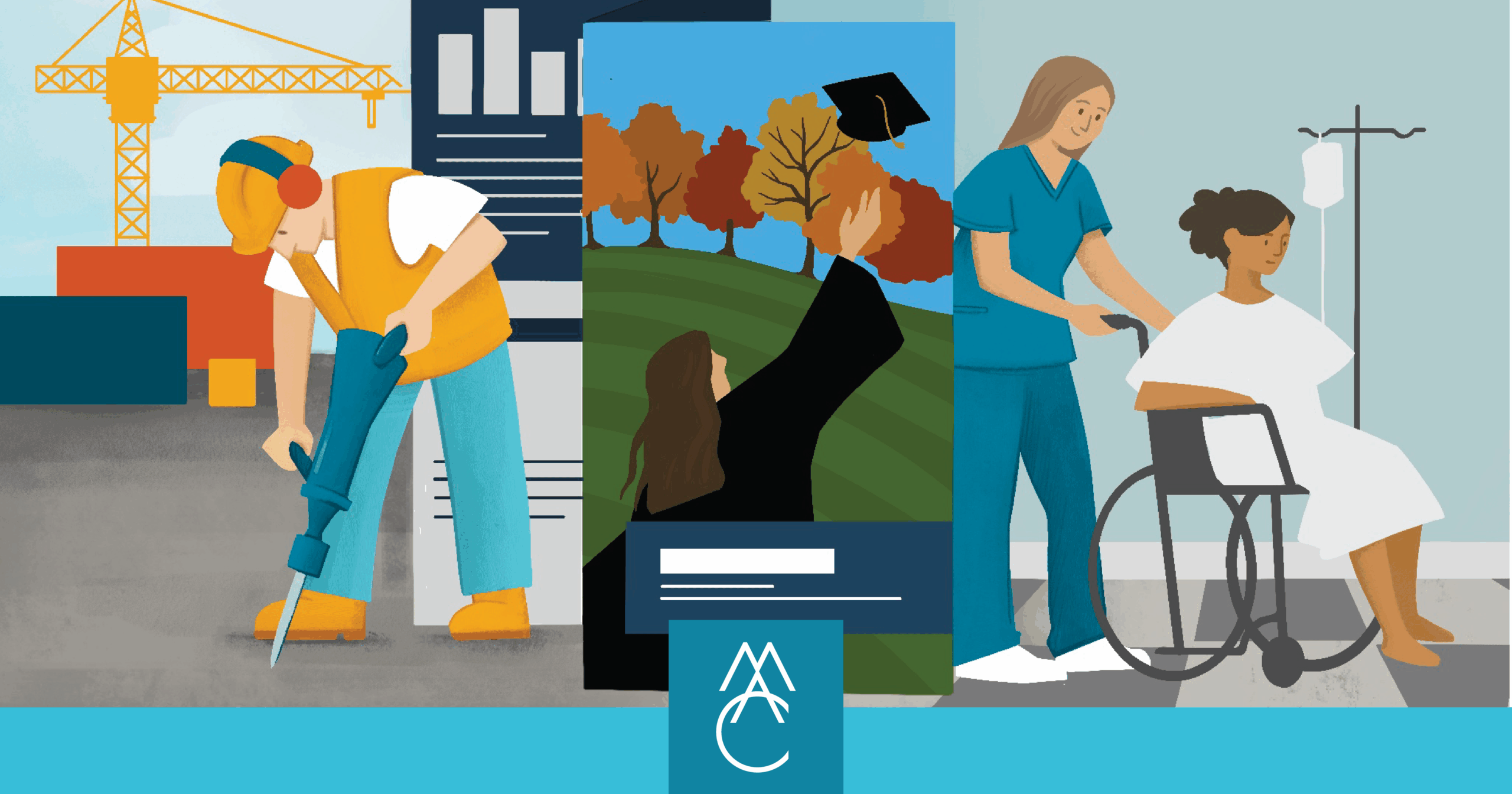
Telling the Real Story: Why Community Colleges Need Brand Storytelling That Reflects Their Students’ Reality
There’s a difference between inspiration and aspiration.
Too often, institutions default to idealized imagery: perfect students, polished pathways, and picture-perfect graduation days. These narratives might appeal to a broad audience, but they don’t reflect the lived experiences of many community college students. Instead of the working parent completing a welding certification, we see a neatly dressed professional returning to school with ease. But, that’s not the real story.
The real stories are resilient, complex, and powerful. Students overcoming setbacks. Families juggling multiple responsibilities. People choosing to build better lives—not because it’s easy, but because it matters.
Those are the stories worth telling. And community colleges are uniquely positioned to tell them.
The problem? Knowing how to tell the story.
That’s where brand storytelling comes in. At its core, brand storytelling is about more than messaging. It’s about reflecting who your students are, what they care about, and how your institution supports their goals. It turns marketing into meaning.
The Power of Empathy & Lived Experiences
Putting yourself in your audience’s shoes takes more than a mission statement. It means involving students in the process.
Want to understand what matters to your students? Ask them. Student focus groups, surveys, and part-time marketing assistants can all bring honest insight into what resonates and what doesn’t. Run brand updates or event concepts past your student body. Ask them what they’re proud of, what they want to see more of, and how they define success.
When students see themselves reflected in your materials, they stay connected. Representation builds trust and trust keeps students engaged.
Up the Photography
Stock photography is easy, affordable, and sometimes necessary. But when every image on your homepage could belong to any institution, your brand loses meaning.
Hiring a professional photographer can be a smart investment. With just a few hours on campus and a few willing student models, you can build a custom photo library that reflects your real community. These visuals add warmth, credibility, and connection across everything from your website to your social feeds.
That said, not every photo needs to be professionally produced. Most people on your team are already carrying a powerful tool in their pocket: a smartphone. With a few small adjustments, you can use it to capture images that are authentic and compelling.
Here are a few simple tips to get started:
- Use portrait mode. This setting adds depth and softly blurs the background, helping your subject stand out. It mimics the look of professional lenses and creates a more polished visual.
- Adjust the exposure. Tap the screen where your subject is, then slide up or down to lighten or darken the image. It takes two seconds and makes a big difference.
- Use the rule of thirds. Imagine the frame is divided into a 3×3 grid. Place your subject where the lines intersect to create more balanced, dynamic compositions.
- Shoot wide, not tight. Phone images can be high quality, but cropping too far can affect resolution. Frame your subject the way you plan to use it whether it’s for a banner, a profile, or a full-page layout.
- Shoot in RAW, if your phone allows it. RAW images give you more flexibility for editing later. If that’s available on your phone or camera app, turn it on. Remember to be mindful of storage space if using a personal device.
You don’t need a full production team to tell real stories visually. You just need the right tools and a little intention.
Celebrate the Small Wins
Every page turned is an opportunity to tell a success story. It’s easy to focus on the big wins—graduation, a high GPA, that first job offer—but harder to celebrate the small victories that carry students there. For those with more on their shoulders, simply showing up to class day after day is worth recognizing.
Education, success, and progress look different for every student. Sharing those in-between moments shows that your institution values the journey, not just the finish line.
But what does this look like?
Start by highlighting everyday success on social. A quick “You made it to class. That’s a win.” can go a long way in making students feel seen. Alternatively, encourage students to track their own progress with planners, reflection prompts, or simple tools they can carry with them. Celebrate showing up with a surprise treat in a random class just for being there.
Most importantly, show progress, not perfection. Share stories of persistence alongside polished outcomes, capturing the whole picture.
Full-Circle Narratives
Just because a student leaves campus doesn’t mean their story is over. Community college alumni are often out in the world doing meaningful, practical work in the same communities they studied in.
Start with alumni spotlights on social. A simple photo and a short quote about where they are now can go a long way in helping current students see themselves in the story. Invite graduates back to campus for classroom visits, panel discussions, or career days. When alumni speak to current students, the advice hits differently. It’s real, relevant, and rooted in shared experience.
You can also look for ways to support career momentum beyond graduation. Partner with local employers to promote job opportunities, or host alumni mixers where former students can network and share their journeys. These efforts strengthen your alumni relationships and reinforce the idea that community college is a starting point, not a stopping place.
The path from classroom to career is rarely linear. When an organization tells stories that come full circle, you help students believe in what’s ahead.
Telling the Real Story
Traditional marketing often shares the best-case scenario. But today’s students are looking for something real. When your marketing reflects lived experiences—not just polished outcomes—it builds trust, connection, and pride.
That might mean investing in custom photography instead of stock or asking students for their opinions. Whether highlighting the small wins or telling stories that continue long after the last assignment submission, community colleges could benefit from brand storytelling beyond the status quo.
At Madison Ave. Collective, we help community colleges uncover and share the stories that already exist on their campuses. The honest, human stories that students recognize as their own because when your storytelling matches the reality of who you serve, you’re not just marketing. You’re building belonging.
This article is also published on Medium.
More Resources
-

Article
Why Websites Are An Ongoing InvestmentCommunity institutions—whether government agencies, universities, or community health organizations—are encountering a unique set of challenges and expectations with their web...
-

Article
Communicating with Diverse AudiencesIf your organization deals in community essentials such as education, healthcare, utilities, or transportation, you’re likely faced with a unique...
-

Article
Safeguard Your Investment: the 411 on Accessible DesignHow can an organization truly serve the public if they can’t reach the whole public? In the U.S., one in...



